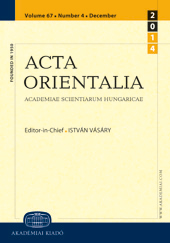Types of oriental pottery in archaeological finds from the 16th and 17th centuries in Hungary
Types of oriental pottery in archaeological finds from the 16th and 17th centuries in Hungary
Author(s): Ibolya GerelyesSubject(s): Archaeology, 16th Century, 17th Century, The Ottoman Empire
Published by: Akadémiai Kiadó
Keywords: Ottoman period in Hungary; Iznik and Kütayha faience; Persian faience; Chinese porcelain; celadon; Buda Castle; King John Szapolya of Hungary; Habaner pottery;
Summary/Abstract: In the 1940s it was noticed that archaeological materials from the Ottoman period in Hungary contained faience from Anatolia. However, Iznik and Kütahya ware, Persian faience, Chinese porcelain and celadon also occur, the last two principally in the vilayet centres of Buda and Eger. Most Oriental ceramics pieces from the Ottoman period are artefacts of modest quality for everyday use. The Kütahya ware, the Persian faience and the Chinese porcelain all served one purpose: coffee drinking. However, material from earlier times includes ornamental vessels and can be linked to the royal court and ecclesiastical circles.
Journal: Acta Orientalia Academiae Scientiarum Hungaricae
- Issue Year: 61/2008
- Issue No: 1-2
- Page Range: 65-76
- Page Count: 12
- Language: English
- Content File-PDF

